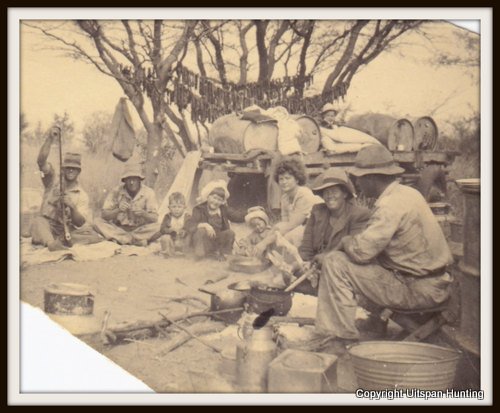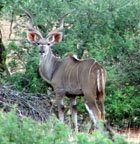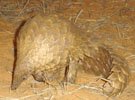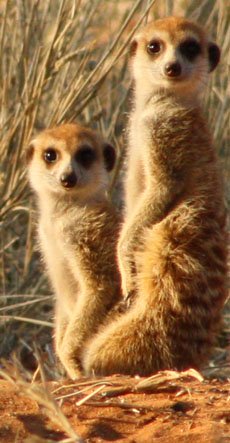For more information about our hunting safaris, don’t hesitate to reach out and contact us!
Caracal Video and Facts
Caracal, Felis Caracal, African Linx, Persian Lynx... a fiercely territorial medium-sized cat that are common in the Kalahari where we live.
Although labeled as a small cat, it is among the heaviest of all small cats, as well as the fastest.
The Caracal resembles a Eurasian Lynx and for a
long time it was considered a close relative of the lynxes. Recent DNA
research, however, has shown that the Caracal is not a close relative of
lynxes at all, but is instead related to the Serval and the
African Golden Cat.
For farmers in Southern Africa, the
Caracal is known as one of the most serious pests of
sheep and goats. Their long back legs give them great jumping
powers and they are able to snatch flying birds from the air
(as can be seen by this great video below).
They are described as...
"The superstar of the animal world. This carnivore is perfect."
and
"This
is the most enthusiastic jumper of all the
cats"
(Amanda Barrett about the caracal)
"The ultimate stealth hunter."
and
"The caracal is a champion in bird catch."
(Tim Green about the caracal)
"In
terms of stealth, agility and sharpened senses, it's one of the most
efficient cats in the world."
(Rob
Harrison-White about the caracal)
Interesting Facts about the Caracal
- Caracal comes from the Turkish word "karakulak" meaning"black ear". The ears of these cats are black and topped with long black tufts about 1,75 inches long.
- The black markings and black backs of its tufted ears make the caracal's face strikingly expressive, especially when its ears are turned down or back in aggressive or defensive threat.
- The caracal does not have the ruff around its face like a lynx does. Caracals have short reddish brown fur. Their chin, throat and belly are white.
- An adult caracal weighs 35-40 pounds, is 16-20 inches high at the shoulder, and 35-39 inches long (not including tail). Male and female look alike.
- Caracals typically use abandoned burrows or rock crevices for maternal dens.
- Caracals prey on rodents, hares and small antelope. They will also kill prey larger then themselves, such as adult springbok or young antelope. The caracal is well known for catching low-flying birds.
- A caracal's hind legs are noticeably longer than his front legs.
Click here to read in Issue # 9 of our Free Hunting Newsletter about the
U$12 000 damage done by a Caracal!
Meaning of "Uitspan"
'Uitspan' is an Afrikaans word that means place of rest.
When the Boer settlers moved inland in Southern Africa in the 1800's, they used ox carts. When they found a spot with game, water and green grass, they arranged their ox carts into a circular laager for protection against wild animals and stopped for a rest.
They referred to such an action of relaxation for man and beast, as Uitspan.

(Picture above of our ancestors.)
Did you know? Greater Southern Kudus are famous for their ability to jump high fences. A 2 m (6.56 ft) fence is easily jumped while a 3 m (9.84 ft) high fence is jumped spontaneously. These strong jumpers are known to jump up to 3.5 m (11.48 ft) under stress. |
Did you know? Some animals have one sense more than man!The flehmen response is a particular type of curling of the upper lip in ungulates, felids and many other mammals. This action facilitates the transfer of pheromones and other scents into the vomeronasal organ, also called the Jacobson's Organ. Some animals have one sense more than man!The flehmen response is a particular type of curling of the upper lip in ungulates, felids and many other mammals. This action facilitates the transfer of pheromones and other scents into the vomeronasal organ, also called the Jacobson's Organ.This behavior allows animals to detect scents (for example from urine) of other members of their species or clues to the presence of prey. Flehming allows the animals to determine several factors, including the presence or absence of estrus, the physiological state of the animal, and how long ago the animal passed by. This particular response is recognizable in males when smelling the urine of a females in heat. |


